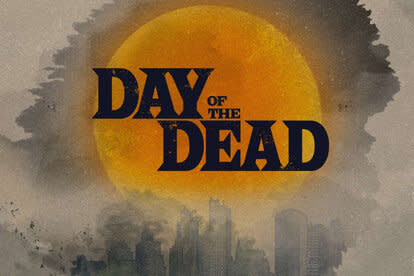Dinosaurs evolved unique eye sockets to deal with eye-popping bite force
Jurassic Park and it’s five sequels famously taught us that the T. rex has relatively poor eyesight, a fact which has been widely accepted in the popular consciousness despite being very probably untrue. In fact, it’s likely that T. rex had better binocular eyesight than modern eagles and hawks. If you found yourself within its line of sight, you wouldn’t be able to hide from it no matter how still you were.
Their eyes weren’t the only things that made them particularly effective killing machines, but they played a significant role. New scientific research reveals that large carnivorous theropod dinosaurs like the T. rex even modified the shapes of their eye sockets in order to chomp down on prey animals.
The running assumption was that the eye socket mirrors that of the eyeball itself, which is largely circular across species. However, Stephan Lautenschlager from the School of Geography, Earth & Environmental Sciences at the University of Birmingham recently completed a long-ranging analysis of the eye sockets of dinosaurs and found that isn’t always the case. The study, published in the journal Communications Biology, reveals that the larger a predatory dinosaur gets, the weirder their eye sockets become.
The study rested on the robust fossil record paleontologists have built up since the first dinosaur was discovered in 1677. Lautenschlager plugged in the data of various skulls to compare their eye sockets and see what there was to see. A considerable portion of the dinosaurian population had precisely the types of eye sockets we might expect. Circular shapes dominate in herbivorous species as well as smaller carnivorous species. Interestingly, the study found that even juvenile theropods largely had circular eye sockets which then changed as they matured.
When carnivores get large — particularly animals with skull lengths in excess of a meter — they tend to have elliptical or keyhole shaped eye sockets. They also tend to have smaller eye socket sizes, relative to the size of the skull which does tend to drive the relative size of the eyeball down, even if the absolute size remains large. That may have contributed to the myth that T. rex couldn’t see well. Certainly, if they had maintained relatively larger eyes, they might have been able to see even better.
The analysis found that elliptical or keyhole shaped eyes evolved convergently across various large theropods, even those who weren’t closely related on the evolutionary tree. That suggests they weren’t the result of any common ancestry but instead emerged in response to some natural pressure which comes with being a large predator.
To find out what pressures might be at play, Lautenschlager ran the different skull and eye socket models through a geometric morphometric analysis which grouped orbit shape across various dinosaur species. Then he exposed those computer models to different forces the living animals likely encountered.
Among the greatest force an animal’s skull is likely to regularly encounter is that of its own bite force. T. rex, for example, boasted a truly eye-popping bite force of about 35,000 newtons. For comparison, the bite force of a human being is about 300 newtons. When biting, the force of the pressure is sent out from the mouth to the rest of the skull and any openings — sometimes called fenestra — are at particular risk for deformation.
The GMM analysis revealed that circular eye sockets experience comparably large deformation under bite pressures as compared to elliptical or keyhole shaped sockets. In essence, if the T. rex or its fellow large carnivorous theropods had kept the standard circular eye socket design, they might have fractured or shattered their eye sockets any time they went in for a meal. Shifting to a more diverse eye socket structure allowed them to develop bites strong enough to lift weaselly lawyers from their restroom hiding spots and chomp them to bits.
Their unusually shaped eye sockets might look weird to us, but in the end, beauty and biting is in the eye of the beholder.

